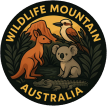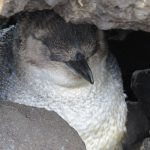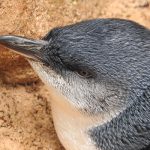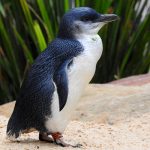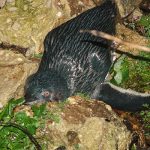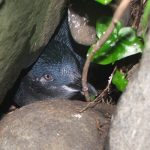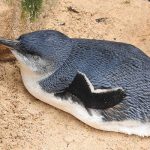The Australian Little Penguin is a true marvel of the southern coastline. It is sometimes known as the Fairy Penguin, a name that suits its diminutive and enchanting presence. The Little Penguin is the smallest species of penguin in the world, making it a unique ambassador of Australia’s diverse coastal wildlife.
Imagine standing on a moonlit shore, gentle waves lapping against the sand, when a chorus of soft noises drifts over the breeze. From the shadows, clusters of charming Little Penguins appear—no taller than a loaf of bread, clad in shimmering blue and white feathers. Their feathers glint with an almost silvery glow, perfectly designed to blend with the ocean both above and below.
- Sight: Their sleek, blue-grey back and snowy white belly.
- Sound: Their calls are surprisingly raucous—ranging from gentle brays to more guttural grumbles as they communicate.
- Movement: They waddle with an endearing determination, flippers jutting out at their sides, but become swift and agile as soon as they hit the water.
Habitat and Distribution
Little Penguins are found along the southern coastlines of Australia, with significant populations in Victoria, South Australia, Tasmania, and on several offshore islands. Notably, Phillip Island in Victoria is home to one of the largest and most celebrated colonies, providing visitors with a magical vantage of their nightly beach landings.
- Prefer sandy or rocky shores for nesting.
- Nest in burrows, natural crevices, or under dense vegetation.
Courtship and Nesting
Little Penguins are monogamous for the breeding season, with many pairs reuniting over multiple years. Courtship is an enchanting affair, often accompanied by mutual preening and synchronised vocalisations. Their nests—burrows dug in soft sand or sheltered among rocks—protect their eggs and chicks from both the elements and predators.
Diet and Foraging
Little Penguins are highly skilled hunters, pursuing small fish, squid, and krill. At dawn, they embark on foraging journeys far out at sea, propelled by strong flippers and guided by remarkable underwater vision.
- Return at dusk in tight groups, a behaviour known as the ‘penguin parade’.
- Sometimes travel up to 20 km in a single day for food.
Conservation Insight
While the Little Penguin is categorised as Least Concern by the IUCN, many local populations are at risk due to:
- Habitat degradation and loss.
- Predation by introduced species such as foxes and domestic dogs.
- Human disturbance and pollution.
Conservation efforts include habitat restoration, predator control, and community education. Protected areas such as the Phillip Island Nature Parks showcase how vigilance and community engagement can lead to thriving penguin colonies.
Encountering a Little Penguin in the wild is a privilege that inspires a sense of wonder and responsibility. By respecting their habitats—keeping beaches clean, following signage, and keeping dogs on leads—we help ensure that future generations can enjoy the magic of these remarkable seabirds.
The Little Penguin reminds us how even the smallest species can captivate our hearts and play a vital role in Australia’s natural heritage. Their resilience is a testament to nature’s adaptability—and underscores the essential value of mindful conservation.
If you ever find yourself on an Australian shore at dusk, keep an eye out for a flash of blue and the tiptoe of tiny feet—you might witness one of nature’s most enchanting parades.
